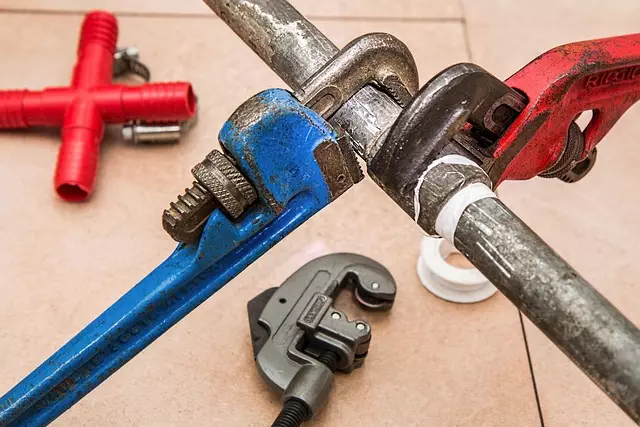Early recognition is key to preventing severe foundation damage in homes. Signs include wall cracks, uneven floors, stuck doors/windows, and water stains. Common causes are poor soil conditions, improper drainage, tree roots, and structural issues. Prompt identification allows for targeted repairs, maintaining home integrity. Regular visual inspections catch early cracks, settling, or shifting. Water intrusion threats must be addressed immediately to avoid long-term damage. While minor issues can be DIY'd, extensive foundation problems require professional residential foundation repair experts for effective solutions. Proactive maintenance through regular inspections and preventive measures saves costs and ensures home safety.
“Foundation damage, often overlooked, can be a costly and structurally hazardous issue for residential properties. Understanding common causes such as soil conditions, poor construction, or natural phenomena is the first step in prevention and early detection. This article guides homeowners through visual signs of structural issues, from cracks to uneven floors, and explains the distinction between normal settlement and shifting. We’ll explore the impact of water intrusion, emphasize when professional help is needed for residential foundation repair, and offer preventative measures to ensure a robust and durable foundation.”
Understanding Foundation Damage: Common Causes and Effects

Foundation damage can go unnoticed for years, but it’s crucial to recognize the signs early on. This is because foundation problems can escalate rapidly, leading to more costly and extensive repairs in residential properties. Understanding common causes of foundation damage is essential for homeowners seeking residential foundation repair.
The primary culprits include poor soil conditions, such as expansive clay soils that swell and shrink with moisture levels; improper drainage around the home; tree roots encroaching on the foundation; and structural issues like inadequate foundation support or settlement. These factors can cause cracks in the foundation walls, uneven floors, stuck doors or windows, and even visible gaps around doors and windows. Prompt identification of these signs is vital to prevent further deterioration and maintain the structural integrity of your home.
Visual Signs of Structural Issues in Residential Foundations

The exterior of a home can often reveal signs of potential structural issues within its residential foundation. One of the most visible indicators is uneven or cracked concrete. These cracks, especially those wider than a penny, could point to problems like settlement or shifting soil. Another visual cue might be bulging or bowing walls, which suggest significant pressure on the foundation and could indicate serious structural damage.
Paying attention to gaps between walls, floors, and doors is also crucial. Expanding or contracting foundations can cause these spaces to widen or narrow over time. Additionally, water stains or mold growth on interior walls, especially near corners, might be symptoms of leaks stemming from foundation flaws. Prompt addressing of such visual signs is key to preventing further damage and ensuring the need for effective residential foundation repair.
Detecting Foundation Cracks and Their Significance

Detecting foundation cracks is a crucial step in maintaining your home’s structural integrity, particularly when it comes to residential foundation repair. These cracks can range from hairline fissures to larger gaps and are often signs of underlying issues. When left unattended, even tiny cracks can expand over time due to shifting soil, changes in temperature, or water infiltration, leading to more severe damage. Regular visual inspections are key; look for any vertical or horizontal cracks on the foundation walls, floor, or ceiling.
The significance of detecting these cracks cannot be overstated, especially in regions prone to seismic activity or extreme weather patterns. In cases of residential foundation repair, early detection allows for prompt action, minimizing costly and extensive renovations. Addressing small cracks can prevent them from becoming major structural problems, ensuring the safety and stability of your home for years to come.
Settling vs. Shifting: Distinguishing Between Normal and Problematic Movement

Foundation settling and shifting are common concerns for homeowners, but understanding the difference is key to knowing when to seek professional help for residential foundation repair. Settling is a natural part of a structure’s life cycle and generally occurs due to soil compression around the building’s footings. Over time, as the soil settles, the foundation may appear to sink slightly or develop cracks in the walls or floors. This type of movement is usually non-structural and does not pose immediate risks to the integrity of the home.
Shifting, on the other hand, indicates a more serious issue. It happens when the foundation moves laterally or out of alignment, often due to improper soil support, ground water changes, or poor initial construction. Unlike settling, shifting can lead to significant structural damage, including uneven floors, doors that stick or do not close properly, and visible gaps in walls or ceiling. If you notice any signs of shifting, it’s crucial to contact a professional for an inspection, as prompt action is essential to prevent further damage to your home, often requiring more extensive and costly residential foundation repair solutions.
Water Intrusion and Its Impact on Foundation Integrity

Water intrusion is one of the most common and detrimental issues that can compromise the integrity of a residential foundation. Even minor leaks or moisture seepage over time can cause significant damage, leading to structural instability if left unaddressed. This is particularly true for homes in regions with harsh climates or those situated in areas prone to flooding. Over time, water can erode the soil around the foundation, causing it to shift and crack. These cracks not only weaken the structure but also create entry points for more water, creating a vicious cycle that exacerbates the problem.
The impact of water on foundations is multifaceted. It can lead to corrosion of steel reinforcement bars, which are often used in concrete structures, compromising their structural integrity. Additionally, water intrusion can cause wood components to rot or deteriorate, further weakening the foundation. In severe cases, it may result in mold growth within the walls and other health hazards. Prompt identification of signs like cracks, stains, or musty odors is crucial for homeowners. If left undetected, these issues can escalate into costly residential foundation repair problems, necessitating professional intervention for effective long-term solutions.
When to Seek Professional Help for Foundation Repairs

If you’ve noticed signs of foundation damage in your home, such as cracks in walls or floors, uneven floors, or doors that stick, it’s crucial to act swiftly. While some minor issues might be addressed through DIY methods or simple repairs, more extensive foundation problems often require professional intervention. Delving into residential foundation repair is essential when the damage suggests a larger structural issue or when the safety and integrity of your home are at stake.
Seeking expert help for residential foundation repair is recommended for several reasons. Professional contractors have the specialized knowledge and equipment to accurately diagnose complex foundation problems, ensuring that any repairs are comprehensive and long-lasting. They can also provide solutions tailored to your specific situation, offering peace of mind and protecting your investment. Timely intervention by experts can prevent minor issues from escalating into costly and time-consuming repairs in the future.
Preventative Measures for Maintaining a Strong Residential Foundation

Maintaining a strong residential foundation is key to preventing costly repairs down the line. Regular inspection and maintenance are crucial first steps in identifying potential issues early on. Property owners should be vigilant for signs of foundation damage, such as cracks in walls or floors, uneven floors, stuck doors or windows, and water stains. Addressing these red flags promptly can save significant time and money.
To prevent residential foundation repair needs, implement proactive measures like ensuring proper drainage around the home to keep water away from the foundation. Regularly inspect and repair any leaks immediately to avoid moisture damage. Adequate compaction of soil before and after construction is vital, along with installing appropriate support systems like piles or walls. Lastly, regular structural assessments by professionals can catch issues early, allowing for less invasive and less expensive fixes.
